Those who like to cook Asian are often dependent on exotic vegetables. We show which Asian vegetables are easy to grow here too.

Fried noodles, vegetables from the wok or curry have become classics in Asian cuisine. People like to cook Asian at home too, but the vegetables usually come from far away and the freshness is not always convincing. In this article, we therefore introduce you to typical Asian vegetables, which also grow well in our home garden.
contents
- 1. Soy and edamame
- 2. Chinese cabbage
- 3. ginger
- 4. Pak choi
- 5. okra
- 6. Wing bean
- 7. Bitter melon
- 8. Lemongrass
Plants from the subtropics or even from tropical areas often have special demands on the climate. All of the vegetables presented here love the warmth and cannot survive a European winter without protection. That is why they are usually only annual in our latitudes, that is, they die in autumn as soon as it gets cooler and darker. Of some species like
Chinese cabbage and Pak choi However, varieties are already available especially for our weather, which makes cultivation quite easier. In the following we will introduce you to various vegetables that are used in Asian cuisine and that also thrive here.1. Soy and edamame
the Soybean (Glycine max) is still a relative novelty in the fields in this country, but its triumphant advance does not seem to be stopped. The legume, which originally comes from Southeast Asia, also grows very well in our latitudes. The dry seeds are mainly used to make animal feed, but also tofu and soy drinks. Of course, this is difficult if not impossible at home - but there are some varieties where you can pluck the unripe pods off and eat the soft, green seeds they contain. This traditional dish comes from Japan and is called edamame there, which can be translated as “bean on a branch”. The varieties are particularly suitable for edamame "Green Shell" and ‘Hokkai Black’which, like pumpkins, are brought forward from mid-April and are allowed to move outdoors in mid-May. Of course, you can also sow directly in May. About three months later, the delicately hairy, green pods can be plucked. Cooked and sprinkled with salt, you can only enjoy the kernels inside the pods - a real delicacy. Incidentally, soybean sprouts, which are found in many vegetable mixes for Asian dishes, are usually not sprouts from soybeans at all, but from mung beans (Vigna radiata).

2. Chinese cabbage
The Chinese cabbage (Brassica rapa subsp. pekinensis) originates from Southeast Asia and has been cultivated in China, Korea and Japan for many centuries. In our latitudes, sowing is only done in summer (mid-June), as the Chinese cabbage tends to shoot and bloom very easily when the weather gets too cool for it. In addition, this type of cabbage grows extremely quickly and is harvested from the end of August to mid-September. The Chinese cabbage is particularly popular in wok dishes or fermented as a type of Korean sauerkraut - kimchi. Chinese cabbage itself has hardly any calories and is considered an extremely healthy vegetable. More information and tips on growing and harvesting Chinese cabbage You will find here.
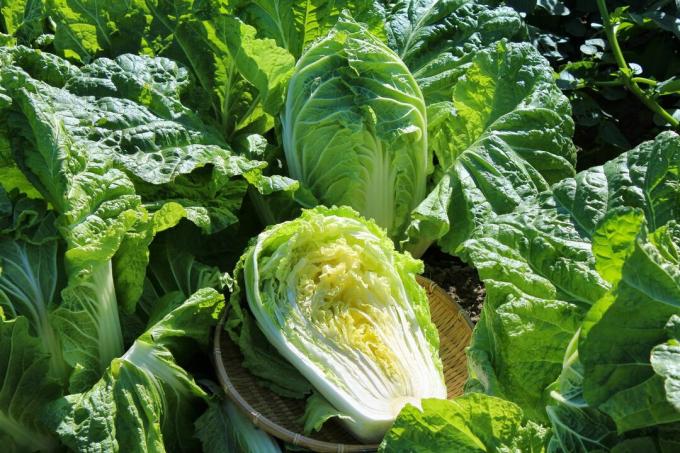
3. ginger
Ginger (Zingiber officinale) is an indispensable part of Asian cuisine. Its special flavor and spiciness not only refines many dishes, but also helps against fevers and colds. It is not exactly clear where ginger originally comes from. Some sources speak of Sri Lanka, others speak of the Pacific islands. In any case, the world's largest producer is India, followed by China and Nigeria. But the Bavarian State Institute for Viticulture and Horticulture (LWG) has also been successfully growing ginger in Germany, more precisely in Bamberg, since 2018. With the help of a rhizome, several young plants can be created by dividing them. The plant loves warmth and a very high level of humidity, which is best achieved in a greenhouse. But ginger also feels good in a large pot of nutrient-rich soil. At cooler temperatures in the house, the ginger needs about eight months before something can be harvested. In autumn, its leaves turn yellow and the rhizome can be dug up. How exactly do you make your own Plant ginger, learn from this article.

4. Pak choi
The Pak Choi (Brassica rapa subsp. chinensis) looks a bit like Swiss chard (Beta vulgaris), but like Chinese cabbage belongs to the cabbage family (Brassicaceae). The plant, which only tastes slightly like cabbage, is ideal for fresh salads, wok dishes, but also as a delicious side dish. Pak Choi needs very warm temperatures, so it is only sown in July. It is therefore ideally suited as a follow-up crop for beds that have been harvested up to then. So far, the best experiences have been made with cultivation in the greenhouse, but there are now also varieties for outdoor use. He loves nutrient-rich soils and a good water supply, especially in dry times. Just two months after sowing, the pak choi can be cut just above the ground and used as a whole in the kitchen. Further information on the choice of varieties and cultivation of Pak choi we have put it together for you here.
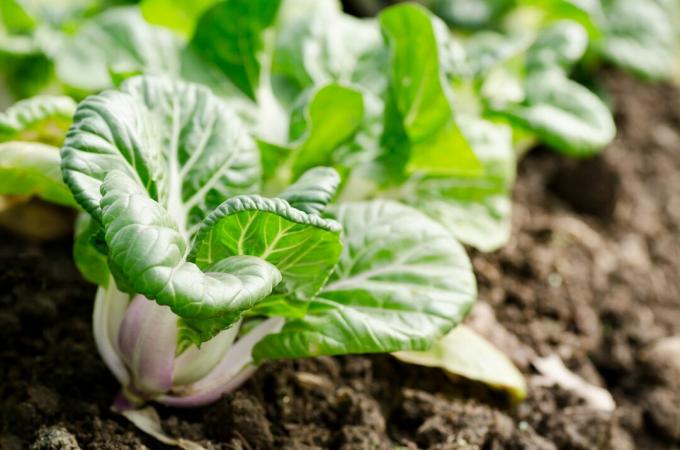
5. okra
Okra (Abelmoschus esculentus) is closely related to hibiscus related and is grown on a large scale in India, Malaysia and many African countries. The still unripe, tender green fruits of okra are also called ladyfingers, bámia or bhindi. They can be prepared raw, blanched or deep-fried, but also cooked in curries in the traditional Indian way. The slimy consistency of the fruits takes a bit of getting used to when you eat them raw. Okra has a very special, mild taste and therefore goes well with almost all Asian dishes. The okra is best served indoors from March and is allowed outside from mid-May - whether in a pot or in a bed does not matter. Compared to other hibiscus species, it is not particularly high and hardly ever reaches a height of 80 centimeters. It loves good soil with sufficient water supply and forms lemon yellow typical from June to July Hibiscus flowers in the leaf axils, which, after pollination, transform into upright growing capsule fruits. Okra is not only a real experience for the palate, it also makes an excellent ornamental plant.
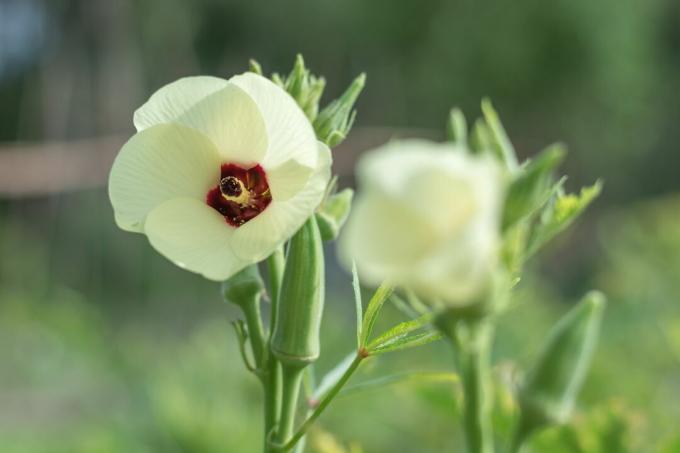
6. Wing bean
The angular shape of the goa or winged bean (Psophocarpus tetragonolobus) probably earned her her name. Like all beans, it belongs to the family of Butterflies (Fabaceae) or pulses (Legumes). Unlike other beans, however, everything on the plant is edible: fruits, ripe seeds, the foliage and the thickened roots, which are similar to potatoes (Solanum tuberosum) can be prepared. Since they are also quite easy to grow and grow quickly, they are considered a beacon of hope against hunger. Its origin is unknown, but today it is mainly grown in Thailand, India, Ghana and the Caribbean. The green pods are mainly used as stir-fried vegetables or blanched for salads, while the leaves are prepared like spinach. Even the wonderful mauve blue flowers of the green bean are used to color confectionery. In this country, the plants are preferred from March and not put outside until mid-May. In summer and autumn, young pods can be continually harvested from the plant, which can grow up to three meters high.
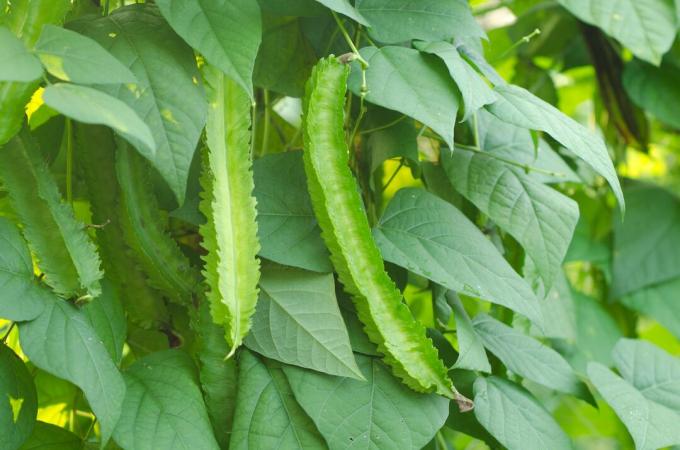
7. Bitter melon
The bitter melon or bitter cucumber (Momordica charantia) looks a bit like a pointed warty cucumber. In fact, it also belongs to the cucurbits (Cucurbitaceae) and climbs up to five meters. The unripe, green, slightly bitter fruits can be fried or steamed as vegetables without a core. If you rub the pulp with salt, you can reduce the bitter substances a little. In some countries the bitter melon is allowed to ripen so that it is orange-yellow at the end and opens at the bottom. Then the bright red coated seeds emerge, the pulp of which tastes pleasantly sweet. Like all pumpkins, the bitter melon loves warm locations. For this reason, they are preferred on the one hand to put them on the windowsill as early as possible and on the other hand they are only planted late in May. A sunny spot in the greenhouse would then be ideal. About five weeks after sowing, the bitter melon begins to bloom, after which you can repeatedly harvest young green fruits.
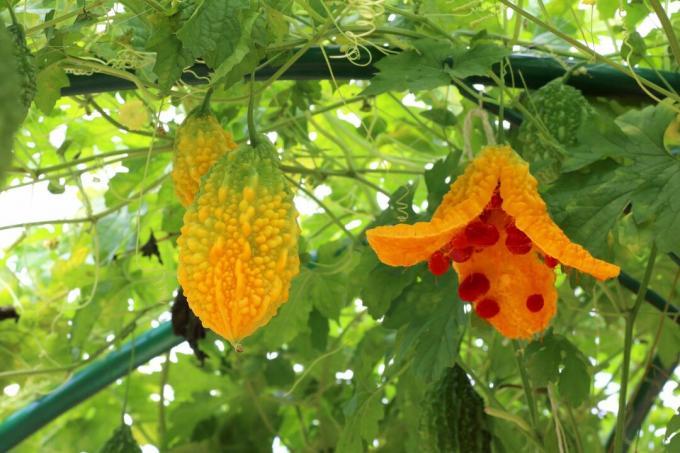
8. Lemongrass
As the name suggests, lemongrass smells and tastes good (Cymbopogon citratus) wonderful after the yellow citrus fruit. However, it belongs to the sweet grass family (Poaceae) and originally comes from the Southeast Asian region. Lemongrass is used equally in hearty and sweet dishes and brings refreshment in soups and drinks. In our latitudes, it can spend the summer outdoors. As soon as the temperatures drop below 10 ° C, the grass, which is sensitive to the cold, has to spend the winter protected in the house. Lemongrass can be sown, but dividing an already larger plant is also a good idea, as the seeds take a long time to germinate and grow. The green shoots are simply cut off a few centimeters above the ground and best used fresh, because dried lemongrass loses a lot of its aroma and taste. If you are now curious, visit our special article on Cultivation of lemongrass.
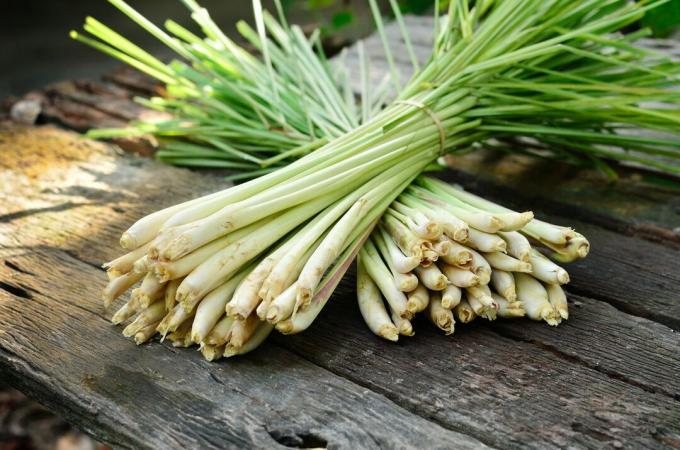
Tip: Our peat-free and sustainable Plantura organic tomato & vegetable soil is ideal for growing various types of vegetables. It provides your plants with optimal nutrients for a high-yield harvest.
You can find more Asian delicacies in our article on the topic of "Shiso & Perilla: The exotic herb from the Far East“.

